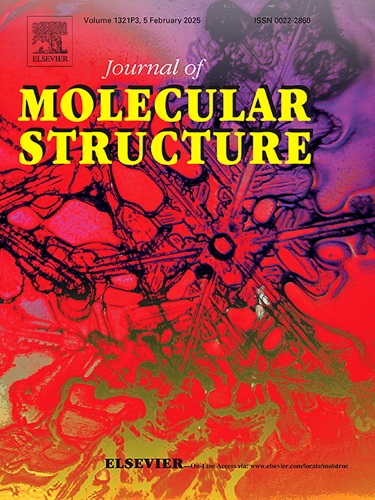A novel fluorescent sensor based on the reuse of a biological matrix for the visual detection of bilirubin
IF 4
2区 化学
Q2 CHEMISTRY, PHYSICAL
引用次数: 0
Abstract
Bilirubin (Bil) is crucial for diagnosing jaundice and assessing liver function. Dynamic monitoring of Bil levels helps evaluate disease progression and therapy efficacy. Consequently, developing a method for rapid and accurate detection of bilirubin is essential for clinical diagnosis and therapeutic decision-making. With an emphasis on green and sustainable development, this study employed discarded peels of Dioscorea polystachya (yam) as a carbon source to create green carbon dots (CDs) using a one-step hydrothermal process. The preparation method was uncomplicated and energy-efficient without any specialized treatment. The prepared carbon dots (Dp-CDs) derived from the peel of yam exhibit high water solubility, remarkable photostability, and exceptional biocompatibility. Static quenching, the inner filter effect (IFE) and the aggregation quenching effect among the groups were the main causes of the decrease in fluorescence intensity of Dp-CDs produced by Bil. The fluorescence sensor constructed with the peel of yam presented a favourable response to Bil, with its fluorescence intensity showing a linear relationship with Bil concentration in the range of 0.30 and 200 μM and a detection limit of 0.28 μM. This method effectively identified and detected Bil in serum and urine in clinical practice, achieving recoveries between 95.6 % and 104.5 %. In addition, a paper-based test strip was designed for this experiment, characterized by its portability, economy, and simplicity of visualization. Dp-CDs provide a solid foundation for rapid and accurate Bil detection, which is critical for early diagnosis and illness monitoring.

求助全文
约1分钟内获得全文
求助全文
来源期刊

Journal of Molecular Structure
化学-物理化学
CiteScore
7.10
自引率
15.80%
发文量
2384
审稿时长
45 days
期刊介绍:
The Journal of Molecular Structure is dedicated to the publication of full-length articles and review papers, providing important new structural information on all types of chemical species including:
• Stable and unstable molecules in all types of environments (vapour, molecular beam, liquid, solution, liquid crystal, solid state, matrix-isolated, surface-absorbed etc.)
• Chemical intermediates
• Molecules in excited states
• Biological molecules
• Polymers.
The methods used may include any combination of spectroscopic and non-spectroscopic techniques, for example:
• Infrared spectroscopy (mid, far, near)
• Raman spectroscopy and non-linear Raman methods (CARS, etc.)
• Electronic absorption spectroscopy
• Optical rotatory dispersion and circular dichroism
• Fluorescence and phosphorescence techniques
• Electron spectroscopies (PES, XPS), EXAFS, etc.
• Microwave spectroscopy
• Electron diffraction
• NMR and ESR spectroscopies
• Mössbauer spectroscopy
• X-ray crystallography
• Charge Density Analyses
• Computational Studies (supplementing experimental methods)
We encourage publications combining theoretical and experimental approaches. The structural insights gained by the studies should be correlated with the properties, activity and/ or reactivity of the molecule under investigation and the relevance of this molecule and its implications should be discussed.
 求助内容:
求助内容: 应助结果提醒方式:
应助结果提醒方式:


